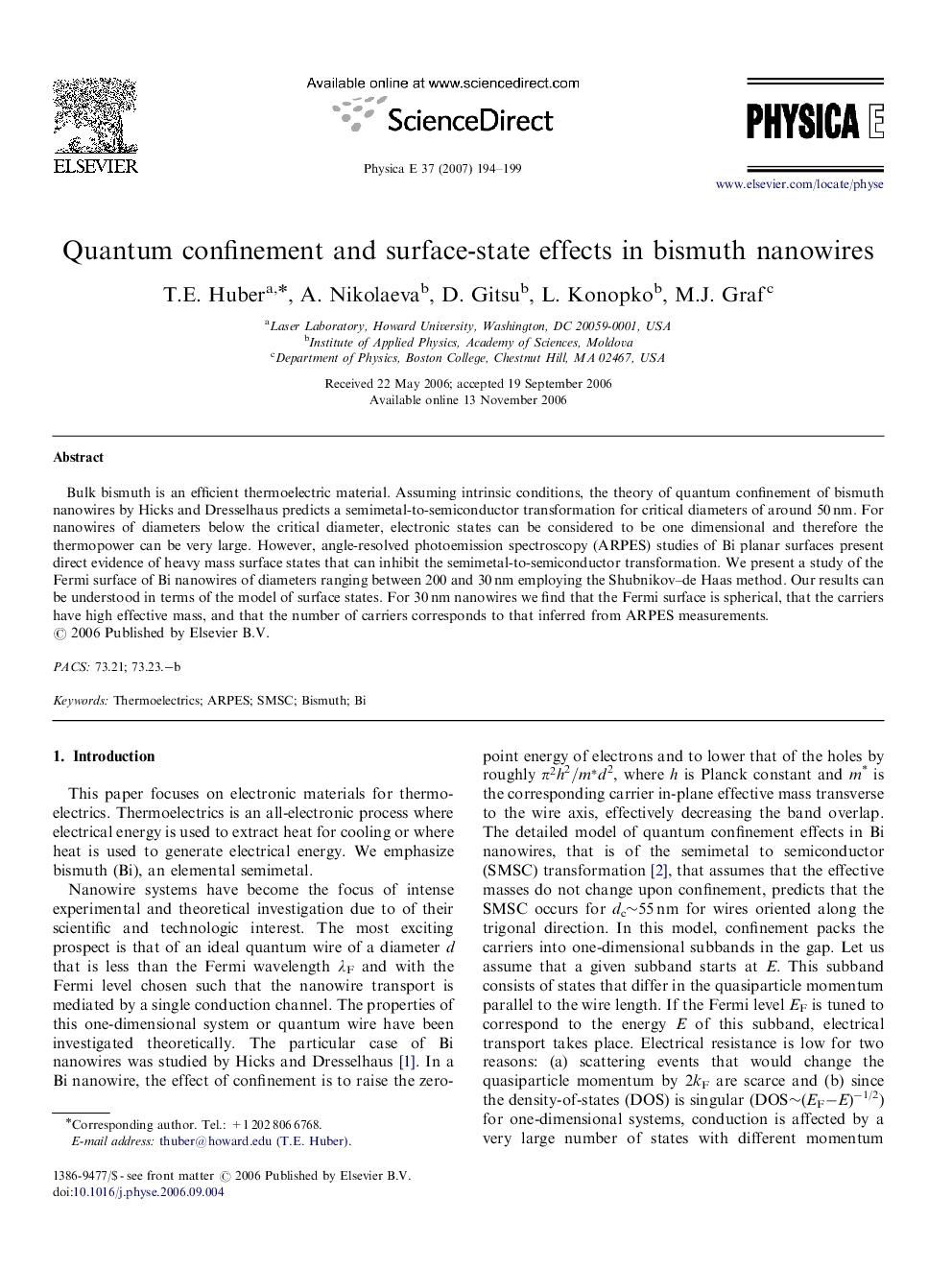| Article ID | Journal | Published Year | Pages | File Type |
|---|---|---|---|---|
| 1547222 | Physica E: Low-dimensional Systems and Nanostructures | 2007 | 6 Pages |
Bulk bismuth is an efficient thermoelectric material. Assuming intrinsic conditions, the theory of quantum confinement of bismuth nanowires by Hicks and Dresselhaus predicts a semimetal-to-semiconductor transformation for critical diameters of around 50 nm. For nanowires of diameters below the critical diameter, electronic states can be considered to be one dimensional and therefore the thermopower can be very large. However, angle-resolved photoemission spectroscopy (ARPES) studies of Bi planar surfaces present direct evidence of heavy mass surface states that can inhibit the semimetal-to-semiconductor transformation. We present a study of the Fermi surface of Bi nanowires of diameters ranging between 200 and 30 nm employing the Shubnikov–de Haas method. Our results can be understood in terms of the model of surface states. For 30 nm nanowires we find that the Fermi surface is spherical, that the carriers have high effective mass, and that the number of carriers corresponds to that inferred from ARPES measurements.
